Link
With drug-resistant infections on the rise and the development of new antibiotics on the decline, the world could use a new strategy in the fight against increasingly wily bacteria. Now, Stanford chemists report November 2 in the Journal of the American Chemical Society a possible solution: a small molecular attachment that helps conventional antibiotics penetrate and destroy their targets.
The attachment, known as r8, helps guide antibiotics through a bacterium’s outer defenses and encourages them to linger, said Alexandra Antonoplis, a graduate student in chemistry and co-lead author with fellow chemistry graduate student Xiaoyu Zang. That penetration and tenacity help kill bacteria, such as methicillin-resistant Staphylococcus aureus, or MRSA, that doctors would otherwise struggle to stop.
Indeed, adding r8 to vancomycin, a first-line defense against MRSA, made the new drug hundreds of times more effective, according to experiments conducted by Antonoplis, Zang, and their advisers, Lynette Cegelski, an associate professor of chemistry, and Paul Wender, the Francis W. Bergstrom Professor of Chemistry. The same strategy, the researchers believe, could apply beyond MRSA to other drugs and infections.
Continue Reading.
270 notes
·
View notes
Photo

For anyone who literally wants to take the moon home this winter.
You can check it out: HERE
This is the full moon version.
124K notes
·
View notes
Photo
Too true

Sam just found out about cashews
40K notes
·
View notes
Photo

“My mom battled drug addiction and mental illness her entire life. She ultimately died of it. She was purposefully open in all of her work about the social stigmas surrounding these diseases. She talked about the shame that torments people and their families confronted by these diseases. I know my Mom, she’d want her death to encourage people to be open about their struggles. Seek help, fight for government funding for mental health programs. Shame and those social stigmas are the enemies of progress to solutions and ultimately a cure. Love you Momby.” - Billie Lourd.
102K notes
·
View notes
Text
September 15
This one is technically not yet history, because at the time of posting, the little craft has about half an hour left to go. That said, let’s proceed.
In 2017, NASA’s Cassini space probe ended its twenty-year mission at Saturn. After a nearly-seven-year-long journey there, it orbited the ringed planet for 13 years and just over two months, gathering copious amounts of information about the planet, said rings, and many of its moons. It landed an ESA probe called Huygens on Titan, the first-ever soft landing in the outer Solar System. It discovered lakes, seas, and rivers of methane on Titan, geysers of water erupting from Enceladus (and passed within 50 miles of that moon’s surface), and found gigantic, raging hurricanes at both of Saturn’s poles.
And the images it returned are beautiful enough to make you weep.
On this day in 2017, with the fuel for Cassini’s directional thrusters running low, the probe was de-orbited into the Saturnian atmosphere to prevent any possibility of any contamination of possible biotic environments on Titan or Enceladus. The remaining thruster fuel was used to keep the radio dish pointed towards Earth so the probe could transmit information about the upper atmosphere of Saturn while it was burning up due to atmospheric friction.
This is us at our best. We spent no small amount of money on a nuclear-powered robot, launched into space, sent it a billion miles away, and worked with it for two decades just to learn about another planet. And when the repeatedly-extended missions were through, we made the little craft sacrifice itself like a samurai, performing its duty as long as it could while it became a shooting star in the Saturnian sky.
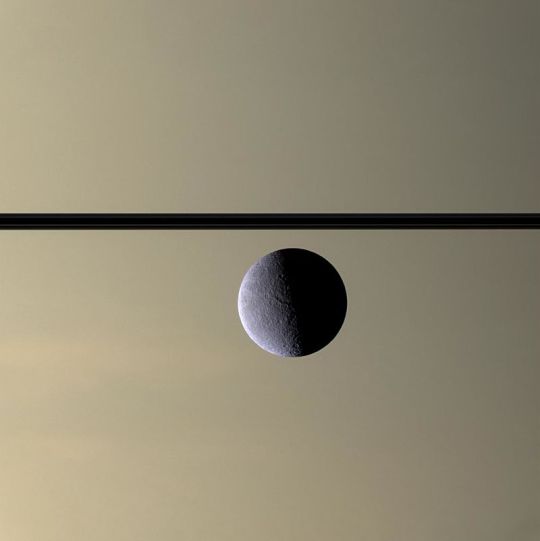
Rhea occulting Saturn
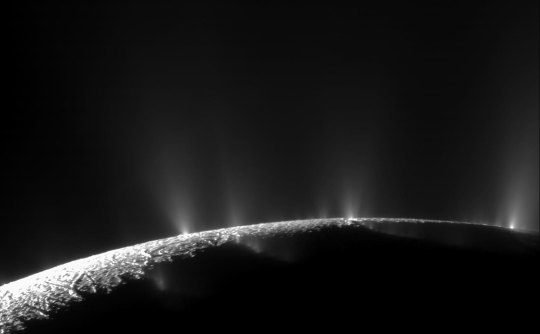
Water geysers on Enceladus
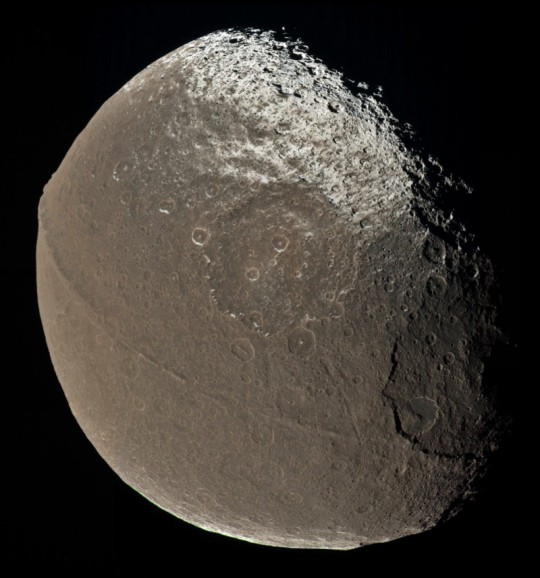
Strange Iapetus

Look at this gorgeousness
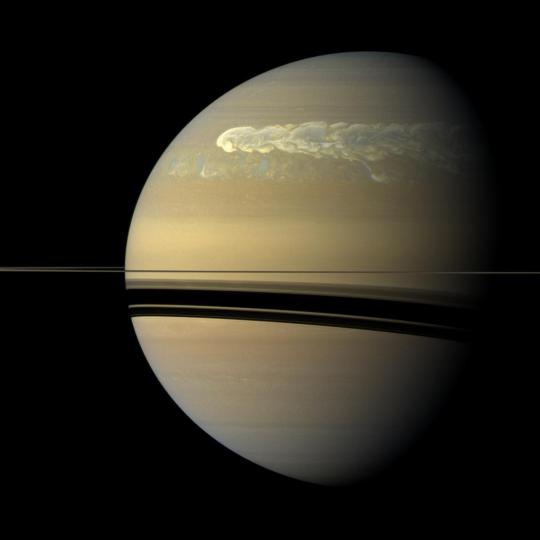
A gigantic motherfucking storm in Saturn’s northern hemisphere

Tethys

This image is from the surface of a moon of a planet at least 746 million miles away. Sweet lord

Mimas
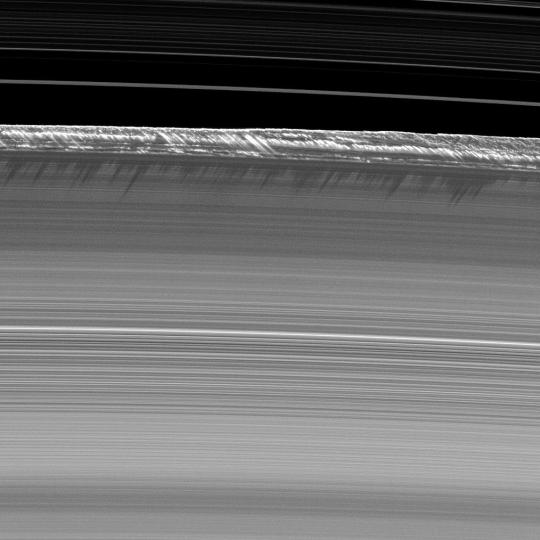
Vertical structures in the rings. Holy shit
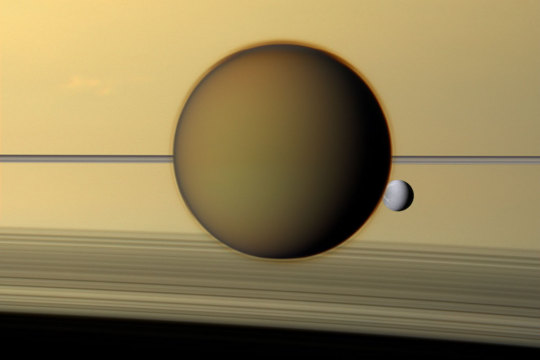
Titan and Dione occulting Saturn, rings visible
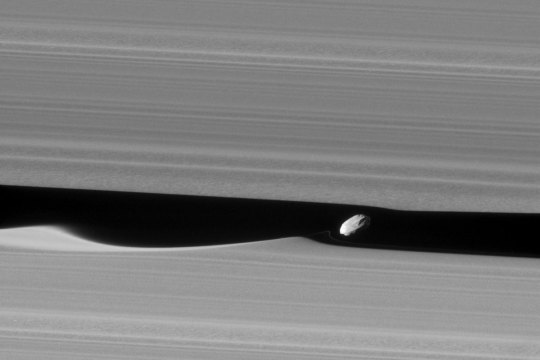
Little Daphnis making gravitational ripples in the rings

That’s here. That’s home. That’s all of us that ever lived.
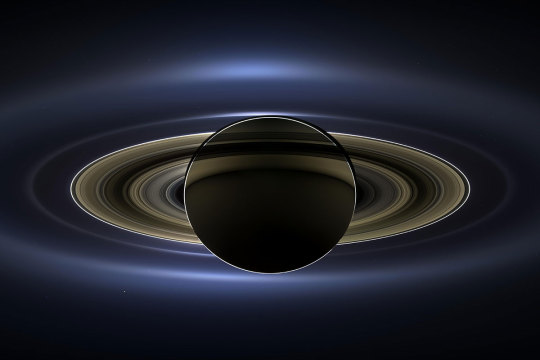
Saturn, backlit

A polar vortex on the gas giant

Icy Enceladus
(All images from NASA/JPL)
58K notes
·
View notes
Photo

Greg Bridges - Star Trek - New Earth Belle Terre, Book #2 (1999).
1K notes
·
View notes
Text
if you don’t think chekov and sulu have a secret handshake get off my blog
1K notes
·
View notes
Photo




Production sketches and final scale drawing by Matt Jeffries, 1965-1966
The Enterprise went through multiple iterations before production started, with Jeffries spending several weeks coming up with ideas that just weren’t hitting any of the notes he wanted. Finally, he had an epiphany — he would use his membership in the Aviation Space Writers’ Association to get materials from NASA, Northrop, Douglas and other companies that had designed spaceships.
“I pinned all that stuff up on one wall and said ‘This is what I will not do.’ The negative/positive approach,” he said in an interview for The Star Trek Sketchbook.
He continued: “So I worked on it for a while, and a couple of weeks later Herb and Gene came in. They liked a bit of this and a bit of that, and I worked on those bits. And then I came up with something I really liked, so I preloaded it — used lots of color and put it in a prominent place that made it kind of stand out. And that worked! It looked better than the other sketches and Gene said ‘That one looks good!’ They — and Bobby Justman, too, when he came aboard later — were a dream to work with.”
Jeffries also relates how he came up with the NCC designation for the ship: “Since the 1920s, N has indicated the United States in Navy terms and C means ‘commercial’ vessel. I added an extra C just for fun. Interestingly, Russian’s designation is CCC so the N and the C together made it kind of international. After that, I had to pick some numbers. They had to be easily identifiable from a distance so that elemented 3, 8, 6 and 4 — none of which is that clear from a distance. That didn’t leave much! So 1701 was as good a choice as any. The reason we gave for the choice afterwards was that the Enterprise was the 17th major design of the federation and the first in the series! 17-01!”
4K notes
·
View notes
Photo

The Dogs of War for the 2015 “Ships of the Line” calendar by Madkoifish (Dan Uyeno)
Love it!
248 notes
·
View notes
Link
The climate-driven collapse of Canada’s Arctic permafrost is much more widespread than previously thought, according to new research that presents a dire picture of the changing northern landscape. The study maps an unprecedented area of permafrost that is poised to thaw, threatening local communities and infrastructure, and may speed up global warming.
From Siberia to Canada, giant craters and canyons are opening in the Arctic permafrost, the result of climate change in the north. Now for the first time, scientists have mapped the permafrost thaw across a huge swath of the Canadian north — a 1.27 million square kilometre region from the Yukon to Nunavut.
“The intensity of the changes that we’re starting to see haven’t been seen for thousands of years,” the paper’s lead author Steve Kokelj told VICE News over the phone from Inuvik in the Northwest Territories. “It’s the first time that disturbance over this large of a landmass has been mapped, and that a scientific rationale was provided for why the hotspots are where they are.”
Scientists fear this process will also release stored methane, a potent greenhouse gas. Permafrost thaw could trigger what some have dubbed “catastrophic climate change,” a cyclical process in which the earth’s warming releases stored greenhouse gases, further warming the earth.
Continue Reading.
1K notes
·
View notes
Photo



A good take on why Trumpkins don’t hear what the rest of us hear when President Trump spews incoherent word salad.
Also why I have limited interest in, or energy for, trying to persuade them through rational debate.
88K notes
·
View notes
Conversation
Me at my second Rodeo
Me: This ain't my first Rodeo
474K notes
·
View notes
Photo

The Sea Eagle: How America’s F-15 Fighter Almost Became a Aircraft Carrier Jet
Michael Peck
October 14, 2016
Back in the 1980s and 1990s, a Dynamic Duo symbolized U.S. military airpower. The Air Force had its powerful F-15 Eagle air superiority fighter. But the Navy had the sophisticated swing-wing F-14 Tomcat, glamorized by the movie Top Gun.
Yet had events worked out differently, the aircraft that Tom Cruise flew could have been an… F-15 Eagle?
For a time, the Navy actually considered a carrier version of the F-15. The F-15N, or “Sea Eagle” as it was unofficially dubbed, was proposed by McDonnell Douglas in 1971, according to author Dennis Jenkins in his “McDonnell Douglas F-15 Eagle: Supreme Heavy-Weight Fighter.”
The Sea Eagle would require some modifications, such as folding wings and stronger landing gear. But McDonnell Douglas’s position was that “due to its excellent thrust-to-weight ratio and good visibility, the F-15 could easily be adapted for carrier operations,” Jenkins writes.
For a sketch of what the Sea Eagle might have looked like, go here.
The early 1970s were an opportune time for McDonnell Douglas (now part of Boeing) to make its pitch. The F-14, first deployed in 1974, was under fire because of the troublesome and underpowered Pratt & Whitney TF30 engines initially fitted to the fighter. Nor did the price tag help: An F-14 cost $38 million in 1998 dollars, versus $28 million for the Air Force’s F-15A.
The F-15N would probably have been faster and more maneuverable than the F-14, as well as cheaper. But the carrier modifications would have rendered the Sea Eagle 3,000 pounds heavier than the land-based version. Perhaps more important, the initial F-15N design was only armed with Sidewinder and Sparrow air-to-air missiles as well as a cannon. What it didn’t have was the long-range AIM-54 Phoenix missile that the Navy counted on to stop Soviet bombers well before they could attack the fleet.
A Navy fighter study came up with another tack: an F-15 armed with Phoenix missiles and their associated long-range AN/AWG-9 radar. But the Phoenix Eagle would have weighed 10,000 pounds more than the F-15A, which meant that it wouldn’t have offered any performance advantage over the Tomcat. McDonnell Douglas and Phoenix manufacturer Hughes countered with the F-15(N-PHX), which kept the Phoenix missiles but ditched the AN/AWG-9 radar for an enhanced version of the AN/APG-63 radar on the Air Force F-15A.
….
Via The National Interest
122 notes
·
View notes



